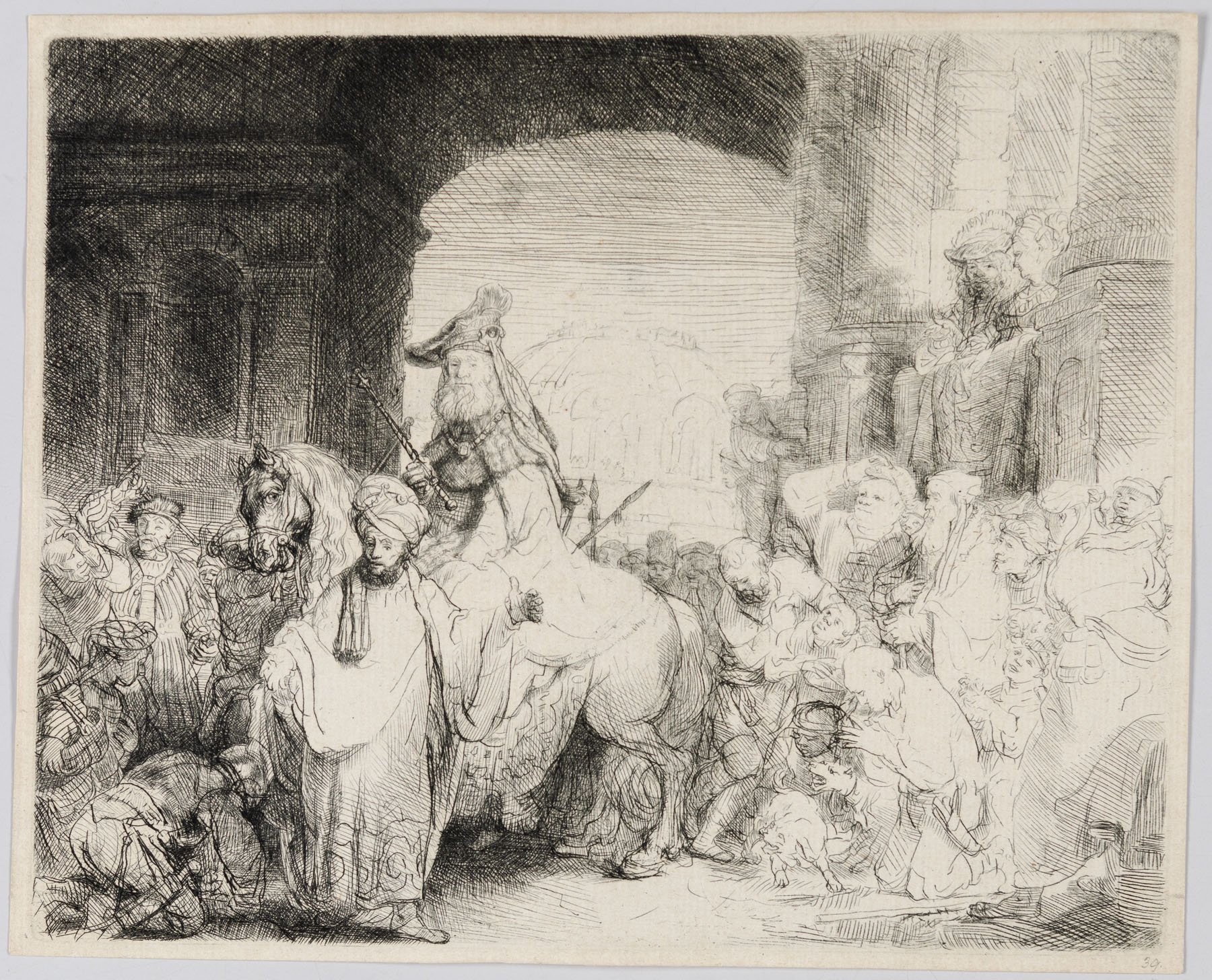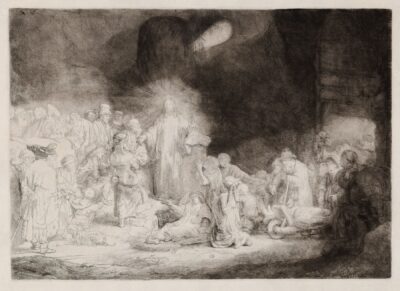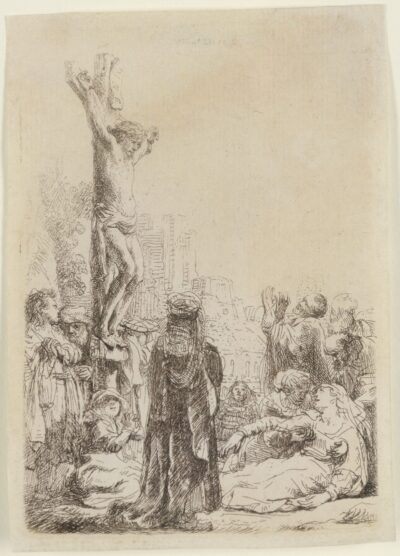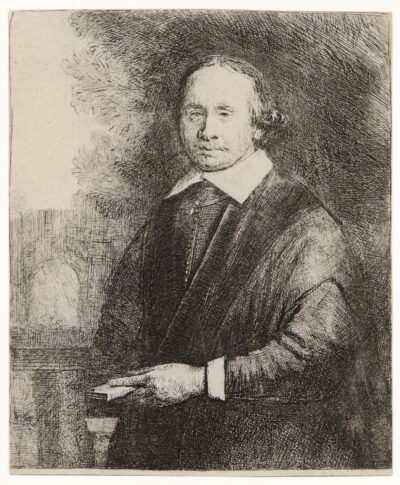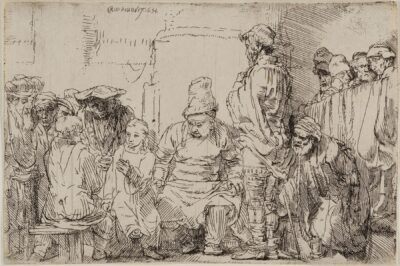The Triumph of Mordecai
Rembrandt Van Rijn
The Triumph of Mordecai
etching & drypoint
c. 1641
An original Rembrandt Van Rijn etching & drypoint print.
c. 1641
Original etching and drypoint printed in black ink on laid paper a portion of a “Words” watermark (Ash/Fletcher 38).
A superb 17th century/lifetime impression of Bartsch and Biorklund/Barnard’s only state, Usticke’s first state of two, New Hollstein’s third state of four, showing touches of burr on the horse and central figures, printed after the upper part of the left hind leg of the horse was shaded over, but prior to the addition of aquatinting to the plate to deepen the shadows in later impressions.
Catalog: Bartsch 40; Hind 172; Biorklund-Barnard 41-1; Usticke 40 i/ii; New Hollstein 185 iii/iv.
6 13/16 x 8 ½ inches
Sheet Size: 7 ¼ x 8 ¾ inches
“The Triumph of Mordecai” is one of Rembrandt’s most elaborately staged and choreographed biblical narratives. This intricate and ironic tale of revenge in which the tables are turned on the wicked and scheming is to be found in the Old Testament book of Esther (chapters 2-7). When the orphaned beauty Esther (or Hadassah) became an active candidate for selection as queen to Ahasuerus, king of the Persian empire, her older relative and guardian Mordecai cautioned her not to disclose her Jewish identity. Ahauserus chose Esther, but in the meantime, he had raised to a high position a certain Haman, who was deeply offended when Mordecai refused on principal to do reverence to him. Haman in consequence hatched a plot to do away with all the Jews in the kingdom. He also set up a gallows on which to hang Mordecai. Unfortunately for him, Haman was unaware that the king was in fact deeply grateful to Mordecai because Mordecai had uncovered a plot against the king’s life. By going about in conspicuous mourning garb (sackcloth and ashes) Mordecai alerted Esther to the plot against her people. Gathering her courage, Esther fasted and then, arrayed in her finest apparel, dared to appear, uninvited, before the king. Dazzled, the king granted her wish that she prepare a banquet for him. Haman was invited as a special guest and at the banquet he asked (referring to himself) how would the king do honor to someone? The king replied referring to Mordecai) that the person to be honored should be decked out in the royal apparel, mounted on the royal charger, and led through the streets by a herald who would proclaim: “Thus shall it be done to the man whom the king delighteth to honor.” Haman, to his chagrin, became Mordecai’s herald and proclaimer. At a second banquet given by Esther for the king and Haman, Haman’s plot against the Jews as well as Esther’s Jewish identity were revealed to the surprised and angry king, and Haman ended up hanging from the gallows intended for Mordecai.
The architectural backdrop of this composition may have been appropriated from predecessors work, but the dynamic semicircular space created by the figures as they wheel, turn and jostle each other is Rembrandt’s own. At the left a soldier with raised whip forces the crowd to kneel, while at the right hysterically yapping dogs and small children add animation and variety to the diverse crowd of onlookers. Rembrandt added an original detail to this traditional representation, including Esther and Ahasureus in a tapestry-draped loge at the right as witnesses to the event. The inclusion of Esther and Ahasuerus here is another telling example of Rembrandt’s use of dramatic compression, in which he alludes to other moments in a narrative within a single image.
As has been noted, Rembrandt’s version of the subject might ust as well be entitled “The Fall of Haman” as “The Triumph of Mordcai.” Haman is more than usually conspicuous: facing the viewer, he strides before the mounted Mordecai, arms flung wide in proclamation. But his contorted brow signals his inner confusion. By contrast, Mordecai is composed and serene, elevated above the crowd’s hubbub.
This is the first etching in which drypoint burr with its velvety dark tones plays a major role in the expressive impact of a Rembrandt print. The strong burr gives the composition great depth, dimension and color.
